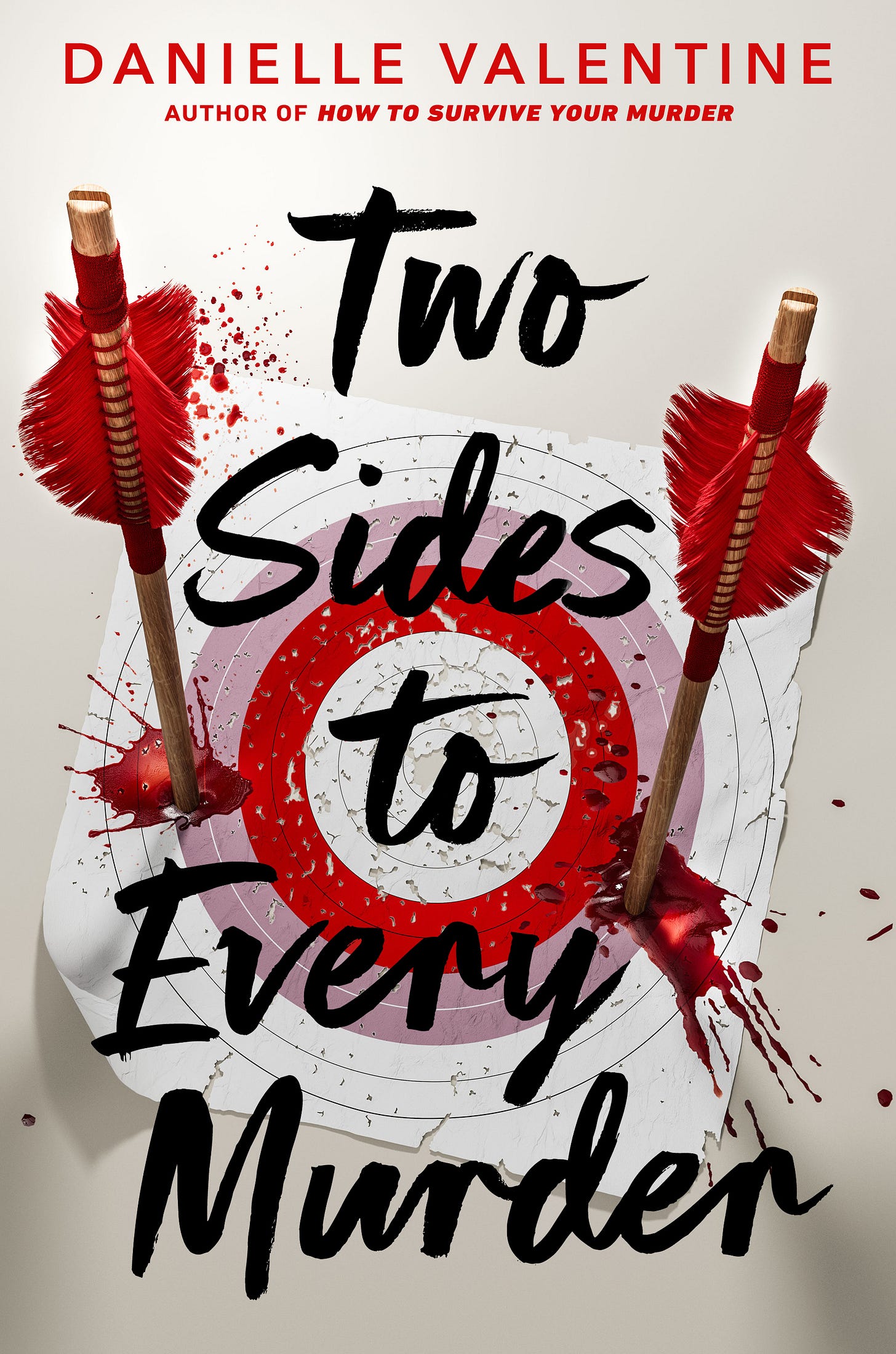Mastering Dialogue: Everything You Need to Know
Posts this week are open to ALL readers, regardless of subscription status!
Hey everyone! Danielle here, back with another in-depth writing guide.
Before we get into the advice, I’m so excited to announce that my Parent Trap meets Friday the 13th thriller, TWO SIDES TO EVERY MURDER, is officially out in the world TODAY!

As a special treat in honor of the book, I’m making all posts this week FREE to readers regardless of subscription status.
Before we dive in, here’s a little bit about TWO SIDES TO EVERY MURDER:
Most people’s births aren’t immortalized in a police report—but Olivia was born during the infamous Camp Lost Lake murders. Seventeen years later, Olivia’s life looks pretty perfect . . . until she discovers the man she calls dad is not her biological father. Now she wants answers about her bloodline, and the only place she knows to look is Camp Lost Lake.
Most people don’t spend their formative years on the run with an alleged murderer—but Reagan did. In the court of public opinion, her mom was found guilty of the deaths at Camp Lost Lake, and both of them have been in hiding ever since. But Reagan believes in her mother’s innocence and is determined to clear her name.
Luckily for Olivia and Reagan, Camp Lost Lake is finally reopening, providing the perfect opportunity to find answers. But someone else is dead set on keeping the past hidden, even if it means committing murder.
TWO SIDES TO EVERY MURDER is available wherever books are sold:
And now onto the post…
Today, we’re tackling one of the trickiest aspects of writing: dialogue. If you've ever struggled to make your characters sound natural and engaging, this post is for you.
Let’s dive in!
The Art of Subtext
This is my least favorite thing about dialogue but, nonetheless it remains true: When people talk, they rarely say exactly what they mean. They often talk around the issue instead of addressing it directly.
Think of Dialogue as an Argument
One of the easiest ways to write compelling dialogue is to frame it as an argument. Even when your characters aren’t actually arguing, they each have their own point of view and something they want. This approach forces you to think about what each character is after, rather than using dialogue merely to convey information to the reader.
Multi-Tasking Dialogue
The best dialogue serves multiple purposes. It’s not just about conveying information; it’s also about entertaining the reader, revealing character traits, and enriching the world you’ve created. Strive to make your dialogue do more than one thing at a time to keep it rich and engaging.
Avoid Exposition Dumps
Good dialogue should avoid being overly explanatory. Avoid lines where characters tell each other things they already know just for the reader’s benefit. For example, avoid something like, “You’ve been my brother for 27 years!” Instead, find natural ways to weave in necessary backstory and context.
Dialogue Exercises
To improve your dialogue writing skills, I have two exercises for you. Grab a pen and paper or use the notepad app on your phone. You’ll need these for your homework.
Exercise 1: Eavesdrop and Observe
Go to a cafe, restaurant, or bar alone and listen to the conversations around you. Yes, it might feel a bit creepy, but writers are often a bit creepy. You’re not going to write down exactly what you hear; real-life dialogue is full of run-on sentences, interruptions, and distractions. Instead, listen for quirks and nuances that make conversations feel real. Note how people interrupt each other, talk over each other, and how their true feelings might be hinted at through their words.
Exercise 2: Mimic Dialogue from TV and Movies
Watch a TV show or movie and write down the dialogue verbatim. Alternatively, find screenplays online and read how screenwriters craft dialogue. Screenwriters rely heavily on dialogue to build scenes and characters, making them a great study resource. Writing down what you hear forces you to engage actively with the material, helping you understand how dialogue works on a deeper level.
Compare and Contrast
Once you’ve completed these exercises, compare the dialogue you’ve written from real-life conversations with that from TV or movies. Notice the differences. Good screenwriters often incorporate realistic elements while still keeping the dialogue clear and purposeful. Look for successful techniques and areas where screenwriters may take creative liberties.
Practice Sketches
Now, put your characters in new situations and write some practice scenes. I call these sketches. Set a timer for 15 minutes and write the crappiest, fastest dialogue you can. The goal isn’t perfection; it’s practice. Put your characters in an argument and see what comes out. You’ll often find gems in these sketches that you can refine and incorporate into your main work.
Conclusion
Writing dialogue can be challenging, but with practice and observation, you can master it. Remember to listen to real conversations, study great screenwriters, and practice regularly. If you have any questions about writing dialogue, leave them in the comments below.
Thanks for joining me on this writing journey. Let me know what you’d like to see next. Your support means the world to me!
Happy writing!
xx,
D



